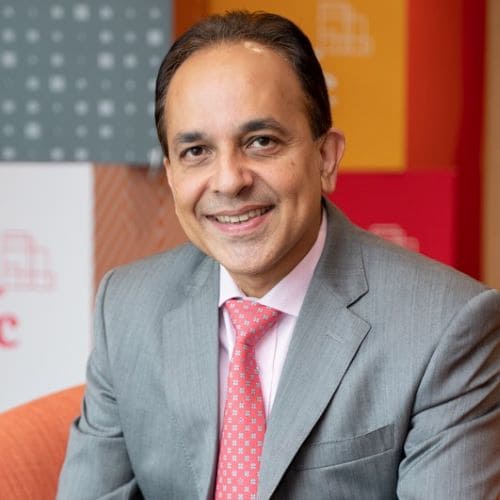Sridharan
The first point that I would like to emphasise in response to your question is ‘the new reality’ that businesses face today – we have referenced that in the title of both publications that you mentioned at the start.
The business world in the past has had to deal with issues such as inflation, economic slowdown, supply chain disruptions and, to some extent, geopolitical-related challenges from economic sanctions, so these are not new issues.
What is different though, and unprecedented in my view, is that these issues are coming together and occurring at the same time. So the new reality for a CEO today is thinking simultaneously about what, for example, US-China relations mean for investments, how supply chains will be affected, what inflation means for the cost of doing business and addressing more recent considerations, such as the hopes and fears of the workforce while also dealing with increasing pressure for action on environmental, social and governance (ESG) issues.
Against this backdrop, PwC conducted our 26th Annual Global CEO Survey late in 2022 and released the results in January 2023. We heard from 4,410 CEOs worldwide, including 1,634 from Asia Pacific.
There were several things that Asia Pacific CEOs told us. Let me summarise that briefly and give some context before I answer your question directly.
One, they are pessimistic about global economic growth – 69% believe global economic growth will decline over the next 12 months versus last year, where 76% felt development would improve. So you see a complete turnaround there in a 12-month period.
Secondly, like their global peers, inflation, macroeconomic volatility and geopolitical conflict are the top three risks that Asia Pacific CEOs say they will focus on in the next 12 months.
Thirdly, CEOs have highlighted the need to transform their business because they believe their current business models will not survive within the next decade.
So then, coming to your question on what actions businesses are deploying, this is what CEOs have told us:
First and foremost, they are prioritising short-term profitability. Their focus is on the ‘here and now’: preserving operating profitability and immediate cash flow generation.
Secondly, what they have indicated, they intend to ‘grow’ out of the crisis in the short term. And how do they intend to do so? By reducing operating costs, raising prices and diversifying their portfolio. Interestingly, most don’t plan to reduce their workforce, but that’s not surprising given the talent shortage we face in the region.
As geopolitical risks rise, Asia Pacific CEOs essentially have said that they are planning to respond accordingly. They will adjust their presence in the current market or expand to new markets, adjust supply chains and diversify their offering to drive short-term profitability. This is slightly different. I think global CEOs have indicated that they will prioritise and take action about cybersecurity and data privacy to manage digital risk. Those don’t feature as high risk as far as the Asia Pacific CEOs are concerned.
And the final point I’ll make concerning your question is how this all relates to the context of Thailand, where you have seen a rebound in the economy, with private consumption and tourism picking up post the opening of our borders.
CEOs in the SME sector which continues to be an underwriter of growth for Thailand, CEOs in this sector could benefit from re-orienting – where profitable – their supply chains, workforce, products and services to leverage the breadth and depth of the SME economy in Thailand and capture their share of the growth.
On the other hand, if you’re a CEO of a large company and large companies continue to be the mainstay of the economy in Thailand, I think they contribute about 60%+ of the manufacturing GDP and 52% of total services. So if you’re a CEO in this sector, the focus should be on growth plans aligned to supporting government policy in defined ‘next-gen’ industries: biofuels, sectors enabled by the digital economy and medical-related devices.
So you’ll see the specific actions CEOs have indicated they will take to manage profitability in the short term.












